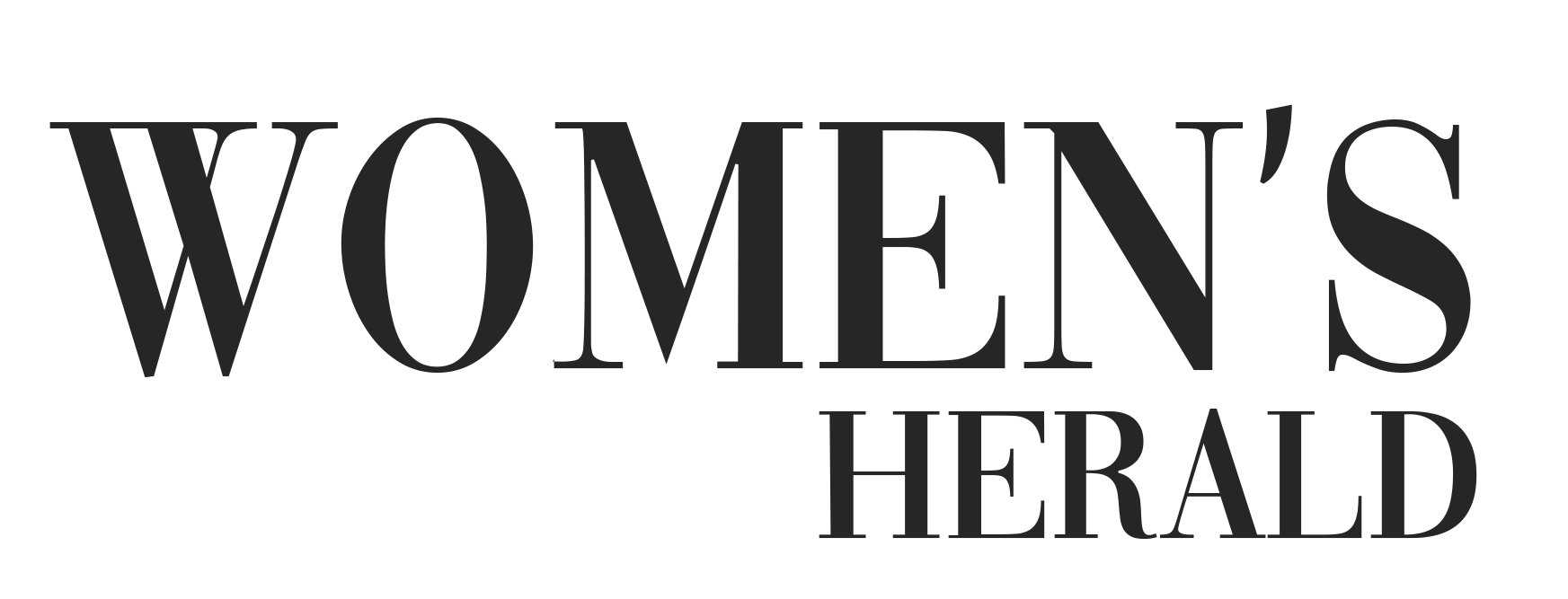In the ever-evolving landscape of business, one name stands out as a beacon of innovation and transformative thinking: Susanna Rantanen. As the founder of the employer brand marketing industry in Finland, Susanna has redefined how businesses connect with talent, aligning their mission with the minds of those who drive their success. Her revolutionary approach to employer branding is not just challenging the status quo—it’s reshaping the entire industry.
But Susanna’s journey hasn’t been without its hurdles. From facing failures and burnout to emerging as a successful entrepreneur, she has navigated the complex world of business with resilience and an unyielding vision. As an introverted yet expressive leader, she has learned valuable lessons about who she is—and who she is not—along the way.
In this exclusive interview, we delve deeper into Susanna Rantanen’s story, her vision for the future of employer branding, and the impact her work is having on both businesses and people.
- Can you share with us your journey from the early days of your career to becoming a leading figure in employer branding? What were some of the key challenges you faced?
I ended up in an HR career by pure accident! But what a lucky strike it was! After graduating from a British university majoring in international marketing management and minoring in PR, I decided to move back to my native Finland in the summer of 2000. I landed a job in a fashion Agentur firm where I stayed for two years until I found myself saying ‘yes’ to an HR job in a new Finnish subsidiary of a US company. This was so out of the box for me as I had been under this delusion of HR career being totally unsexy and HR people utterly boring. But there I went proposing myself as their HR person to a friend of mine who had been hired to manage this new subsidiary. This role, however, allowed me to put my own print into HR as it was a new role, no one had time to onboard me or watch what I do, as long as I hired the people we needed and developed or localized all the HR processes and practices necessary. I loved it! After a few years, love called me, and I ended up moving cities to be with my now husband. That’s when I tried a consultancy job in a PR agency. Only to discover that was not for me after all. It was spring 2006, and I was about to start my own business in employer branding then, but fortunately, the universe stopped me on those tracks, and I was offered an HR job at a wonderful company called Management Events. It was my MBA to hire and retain talents matching the company mission, inspired by the founder, Olli Muurainen. From there, I went on to start my first business, Heebo, inventing a recruitment web app, the first step in matching talents with missions. With this web solution and platform, I wanted to help job seekers and employers connect through company cultures and work personality matches. Job seekers loved it so much, but I was way too early with employers as the understanding of company cultures wasn’t as developed back then. I did try to develop a tool to help employees first discover their company cultures, but I was unable to commercialize the platform fast enough and ran out of money. I had to call it off before we ended up bankrupt.
We tried so hard with my team, but it wasn’t enough. The Finnish market was way too small for us. Sometimes I wonder had we done it elsewhere, like in the US, would the market size have been on our side? But we’ll never know. I got burnt and burned with that one, but Employer Branding Agency Emine took off from there. I started to apply all my knowledge, insight, and expertise on matching company cultures with work talent personalities, but first in recruitment marketing through content and eventually, started to develop the employer branding side of it. The way I ended up differentiating these was when recruitment marketing is a short-term campaign with the goal of filling a vacancy, employer branding is a long-term communication process building demand as a workplace through emotional connections branding creates and affinity transformational employee experiences create. My thinking has been a paradigm shift in the global industry and that’s why, I believe, I became a leading figure, first in Finland and then outside Finland.
My biggest challenges on this journey are three-dimensional:
- First, the perseverance and hard work it has taken to create an entire domain and the demand for services and knowledge like this. It has caused me to burn out twice and say goodbye to my dreams of having more children (due to the toll on my body and not being able to get or stay pregnant again). We’ve also invested years and years of hard work in educating the market and we are still to claim full return on that investment. But I have this strong sense and faith in my mission as my marathon, instead of the sprint many other agencies who have started to provide employer branding or recruitment marketing services after we have been able to leverage. Even though it troubles me every now and then, I keep my focus on my entrepreneurial mission of changing the entire way employer branding is seen and used as a strategic business asset in order to make better business and become better employers.
- Secondly, because we were the first company to do this, I have had to invest also in educating the people I’ve hired. This has been another major cost during the journey of our agency that I haven’t been able to yet convert into full returns. But again, I keep my focus on the mission and trust one day this will change. It was my choice to take this path when I could have created a recruitment agency and do what everyone else is doing and make a fortune with it. But that never compelled me. I feel I was born to make this difference and I feel lucky and proud to be on this journey nevertheless.
- Third, I always strived to be a really good leader for my people. I wanted to be the embodiment of a great leader when they later in their lives would think about a wonderful and really bad examples of leaders. I found out I can be overly empathetic and put everyone elses’ needs before my own and this was one of the reasons contributing to burning out. I spent so much time supporting, sparring and paving the way for my people that I lost myself in the process. When I was about 44 or 45, I said to myself, when I turn 50, I don’t want to be anyone’s boss anymore. I just want to work with my husband and that’s it. But then, fortunately, life made the change for me I was too afraid to make myself, and I ended up with just one person left on my payroll. And everything changed for the better. Even though I have had probably the most wonderful and talented people working for me, in both of my companies, and I have enjoyed most of it very much, I have never been so content as I have been now for the past two years with just one full time employee on our payroll. I have no desire not to have her work with us next year when I turn 50. I think, these have been the biggest challenges even though we were on the verge of going bankrupt with the web app business many times and I was afraid we would lose our home because of my dream, but somehow, even those moments, as hard as they were, have not been as rough as these three challenges.
2. You mentioned facing failures and burnout. How did these experiences shape your approach to business and leadership?
When I founded my first business, Heebo, I was an HR & talent acquisition professional with zero experience or competencies in software engineering or software business. I had a strong vision and even stronger need to solve a talent acquisition problem I had come to experience too many times in my previous work. It could have turned out to be a recruitment business – which I did for a while for testing and generating revenue purposes – but in 2009, 2010 when I founded Heebo, the software startup boom was hot in Finland, and I was able to get investors only if I was to create a web app. So, I did. I was a lone rider, I didn’t get any other people to co-found it with me, and I had to learn everything from scratch: how to make a business plan for a web app business, how to raise money, how to select a software development partner to lead the project with engineers without any prior experience of such. Fortunately, I was naturally talented in branding my business and the topic this app was supposed to solve, so I did get attention on the market with zero marketing budget. But, oh boy, was it difficult and was I constantly experiencing total discomfort in my role? Thankfully, I started to get people around me who supported me and helped me on this path, but looking back, I was crazy to do something like that on my own with no experience on ANYTHING I was doing. I did manage to pull it off for years but I ended up totally crashing and burning with it. We had a small baby, too, and we were building a house, during those years, we also went through IVF treatment for over two years resulting in countless miscarriages and no second baby. I don’t know how I’m still a somewhat sensible person!
What I learned during those years was:
- Who am I as an entrepreneur, employer, and business leader? I understood I am not a software seller. I am a passionate and gifted developer with a lot of grit, but not a seller. So, it is not for me to have a business that leads me to become a software seller and nothing else. I learned I am a developer, but also an educator and a guide to clients in the areas of connecting people with the business mission, transformation, and goals, and a gifted content creator.
Business success for me isn’t about growing a business fast, hiring lots of people, and measuring only in revenue and profit. I am most driven to create something more fundamental and permanent in the world, and in this domain, that solves talent-related business problems for management and leaders through communication, marketing, and systems around it. I want to leave a footprint in the world as a thinker and innovator and be the Seth Godin of employer branding as one of my listeners suggested. I want to make employers more accountable for creating prosperous career paths and employee experiences through this methodology because the level of Magnetism is dependent on how competitive the company is willing to become, and not in the area of adding more costs but matching talents and people leaders with missions. This is my life’s calling and success to me is making this a global movement and inspiring people who already work in employer branding to see beyond recruitment campaigns, inspiring business leaders to become compelled by the business benefits of this methodology, and as a result, helping people find workplaces that make them happier in life. It has taken me many years and many pep talks to accept that it is okay not to stare at your revenue only, and that success can be measured in so many other ways, too. But that said, I do aim to have a very successful business as a result of this methodology and the value it generates for people, businesses, and business leaders.

3. As an introverted yet expressive leader, how do you balance your personal traits with the demands of leading a company and driving innovation?
What an important question! I learned it through trial and error, and also have other burnout entrepreneurs to thank for their openness in addressing burnout and making it okay to talk about. I have come to realize that instead of trying to shut down those characteristics of me that ignite ideas richness, creativity, innovation and getting things done, I should manage my consumption of energy. For a long time for example, I knew I would benefit from medication for burnout, but I didn’t want to take it as I was ashamed it would make me a weak person who would lose all our customers’ trust in us, as this was the stigma I learned during the early years of my career. I was also afraid medication would kill my creativity and what else is there, if I lose that? But, with the help of some great examples in the entrepreneur world, I finally asked for medication and learned to manage my levels of energy. I feel so good these days, and I also let go of the Lutheran ‘good girl’ attitude of being always available and pushing my limits. If I am too tired for creative work, I no longer force myself to continue. I go for a walk, or take another kind of break, or continue the next day if it makes more sense. I’m very in tune with my body and what it needs from me be it rest, food or whatever. This has been a paradigm shift for me. And I make sure my team does the same. Working in a creative business needs fresh eyes and a clear head and my people are free to lead themselves in this. As long as we do what we promise for each other and our clients.
4. You’re credited with creating the employer brand marketing industry in Finland. What inspired you to take on such a monumental task, and how did you go about building it from scratch?
I never thought about it as my goal. It was a side effect as a result of innovating in the field of employer branding with such industry changing ways and naturally finding myself as an inspirational spokesperson and advocate of modern employer branding. Now that we have such a lively employer branding community in Finland, I feel so proud of all the people who are working in this domain and have made it what it is today.
5. What impact do you hope your upcoming book will have on the employer branding industry and business owners? What key insights can readers expect to gain from it?
First of all, I hope business leaders and owners will be inspired by the understanding of what employer branding really is, and this opportunity to use this systematic, sense-making methodology that can provide them significant value-added beyond the commonly expected ‘more applications and better-quality applicant’ combo. I have always enjoyed working with business owners and top management, both during my HR career and as an entrepreneur, because I have always felt I can understand their pain and figure out talent-related solutions for those business problems. This methodology was essentially born out of a solution for one Managing Director, who I still work closely with and became friends with. I don’t want businesses to waste money on random acts of marketing in the hopes of getting results and this provides them one way to guarantee a way out of ad hoc in HR marketing.
For the employer branding industry, I’m hoping to give access to a whole new world of professional opportunities, a progressive career path in what I call modern employer branding, a solution that will enable the users it become trusted advisors for their managers and leaders in the company, and provide a way to expand from the fast-pace recruitment marketing to long-term employer branding creating impact both internally and externally. And not just for the people who typically work in employer branding, but for those who have a career in B2B or B2C marketing and communications, too. Who aspires to a change in their careers, doing something more meaningful while still applying some of their expertise, experience, and knowledge in content marketing, PR, communications, and social media.
My ultimate dream is for this book to kick off a whole new dimension for marketing and communications, not B2B, not B2C but H2H, human-to-human marketing providing competitive advantage for businesses and the possibilities to discover better career and better life prospects and the joy of work for talents whose minds match with missions.









